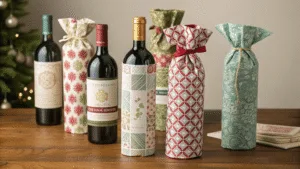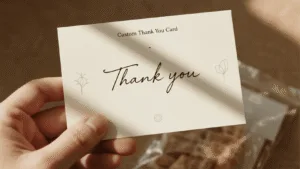The holiday season arrives, your sales spike, but so does the mountain of waste. Much of that waste is shiny, glittery wrapping paper that customers think is recyclable, but is actually destined for the landfill.
Christmas kraft wrapping paper is a growing favourite because it is a truly sustainable option that is recyclable, compostable, and often made from recycled materials. Its natural, rustic aesthetic also aligns perfectly with modern consumer demands for eco-conscious and authentic branding, making it a win-win for retailers.

I vividly remember the Christmas mornings of my childhood, the floor buried under a sea of colorful, torn paper. It was magical then, but as someone who has spent his life in the packaging industry, I now see that image differently. I see the plastic films, the glitter that gets everywhere, the metallic foils—all contaminants that make recycling impossible. A few years ago, my team and I were brainstorming holiday packaging for a boutique client. They wanted something festive but were deeply committed to sustainability. We developed a line of custom printed kraft wrapping paper with simple, one-color snowflake and reindeer patterns using water-based inks. We paired it with natural jute twine and custom paper gift tags. The result was beautiful, cost-effective, and completely recyclable. The positive feedback from their customers was overwhelming. It proved to me that retailers don’t have to choose between festive packaging and environmental responsibility.
Why is Traditional Christmas Wrapping Paper So Bad for the Environment?
You carefully separate your paper gift wrap into the recycling bin after the holidays, feeling good about doing your part. But you might be unknowingly contaminating the entire batch.
Most traditional Christmas wrapping paper cannot be recycled. It is often laminated with plastic, decorated with non-paper glitter, or contains metallic foils. These additives cannot be processed by standard paper recycling facilities and send tons of holiday waste straight to landfills.
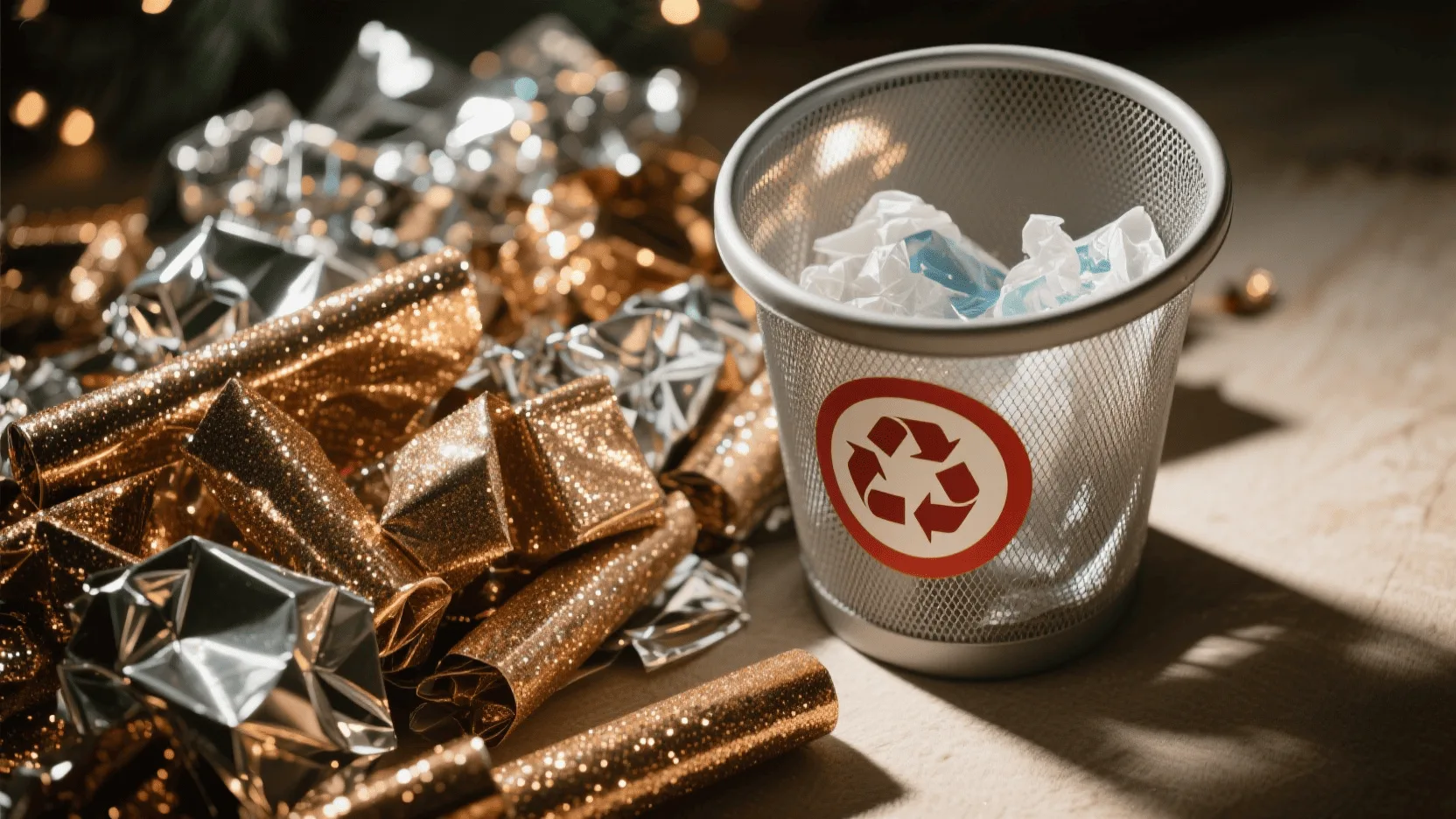
The core issue with festive wrapping paper is that it’s rarely just paper. To get that shine, shimmer, and durability, manufacturers add materials that recycling plants can’t handle. The thin plastic film that gives paper its glossy finish is a major culprit. Then there’s glitter, which is made of microplastics that contaminate paper pulp and can end up in our waterways. Metallic and foil-based papers are another problem, as they are mixed materials. As a rule of thumb, if you can perform the "scrunch test"—where the paper stays scrunched in a ball—it’s more likely to be recyclable. If it springs back open, it probably contains plastic. During the holiday period from Thanksgiving to New Year’s, household waste in the U.S. increases by 25%, contributing an extra 1 million tons per week to landfills Stanford University. A significant portion of this is gift wrap and shopping bags. As a manufacturer, this is a problem we take seriously, which is why we guide our clients toward genuinely sustainable alternatives.
The Contaminants That Ruin Recycling
Understanding what makes paper non-recyclable helps in choosing better options.
- Lamination1: A thin layer of plastic film is bonded to the paper to make it stronger and give it a glossy or matte finish. It cannot be separated from the paper fibers in the recycling process.
- Glitter2: These tiny plastic particles clog recycling machinery and contaminate the final recycled paper product.
- Foils & Metallic Inks: Papers with a metallic sheen are often made with plastic foil or contain metallic elements that are not repulpable.
Comparing Wrapping Paper Types
| Feature | Traditional Glitter/Foil Wrap | Christmas Kraft Wrap |
|---|---|---|
| Recyclable? | No | Yes |
| Compostable? | No | Yes (if unlaminated) |
| Primary Material | Paper mixed with plastic/foil | Paper (often recycled) |
| End-of-Life | Landfill | Recycling or Compost |
| Sustainability Signal | Low | High |
What Are the Eco-Friendly Benefits of Kraft Wrapping Paper?
You want to offer festive packaging, but you’re also aware of your brand’s environmental footprint. How can you be sure that kraft paper is truly a greener choice?
Kraft wrapping paper’s sustainability stems from its simple, unadulterated composition. It is typically unbleached, fully biodegradable, and easily recyclable. Furthermore, it is often produced with a high percentage of recycled content, reducing deforestation and saving energy.
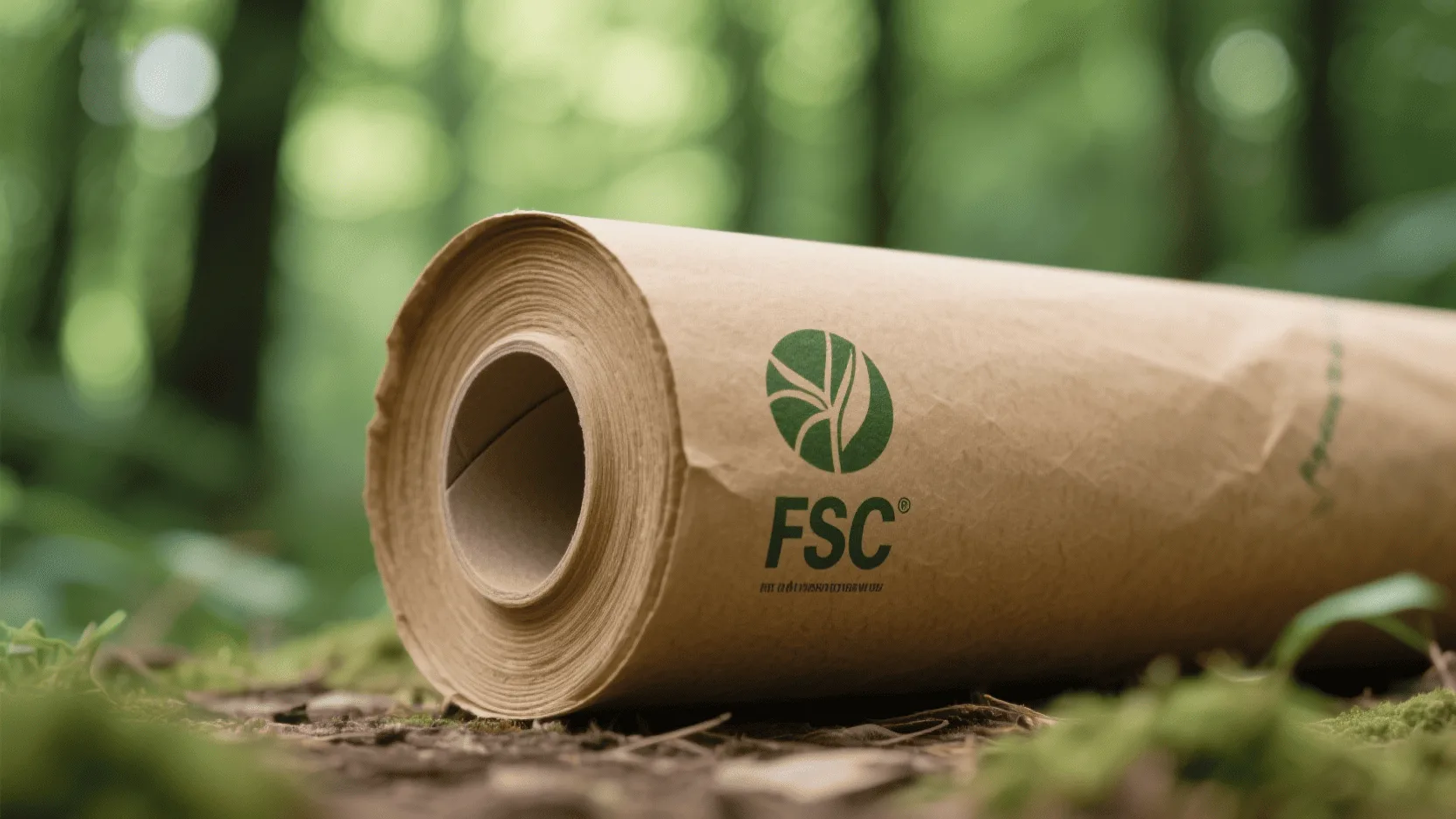
The term "kraft" comes from the German word for "strong," and it refers to the paper-making process that creates very strong paper fibers. The kraft process is also more sustainable than many other methods because the chemicals used to pulp the wood are recovered and reused in a closed-loop system. The resulting paper, especially when left unbleached, requires fewer chemicals and less water. This makes it a clean product that breaks down easily in both recycling and composting systems. As an FSC-certified company, we ensure our kraft paper comes from responsibly managed forests, preventing deforestation. I worked with a growing organic food retailer who wanted their holiday gift packaging to reflect their brand’s ethos. We switched their glossy, non-recyclable bags to our custom kraft paper bags. Not only did this align with their sustainable mission, but customers noticed and praised the change. They felt the packaging was now as honest and natural as the products inside. This choice didn’t just reduce waste; it strengthened their brand identity and customer loyalty by proving their commitment to sustainability.
The Virtuous Cycle of Kraft Paper
The environmental benefits are clear from production to disposal.
- Responsible Sourcing1: Using virgin pulp from FSC-certified forests or, even better, using post-consumer recycled content, reduces the impact on natural resources.
- Cleaner Production2: The kraft pulping process is more efficient and creates fewer waste byproducts compared to mechanical pulping or processes requiring extensive bleaching.
- Simple Disposal: Because it is just paper, consumers can confidently place it in their recycling bins. If it’s unlaminated and printed with soy or water-based inks, it can even be added to a home compost pile.
How Does Kraft Paper Enhance a Retailer’s Brand Image During the Holidays?
You might think that plain brown paper looks unfinished or cheap, potentially devaluing your products during the premium holiday season. Are you sacrificing brand image for sustainability?
On the contrary, kraft paper’s minimalist aesthetic is now perceived as a premium, authentic, and thoughtful choice. It acts as a neutral canvas that makes custom branding pop, conveying an image of eco-conscious sophistication that resonates strongly with modern consumers.
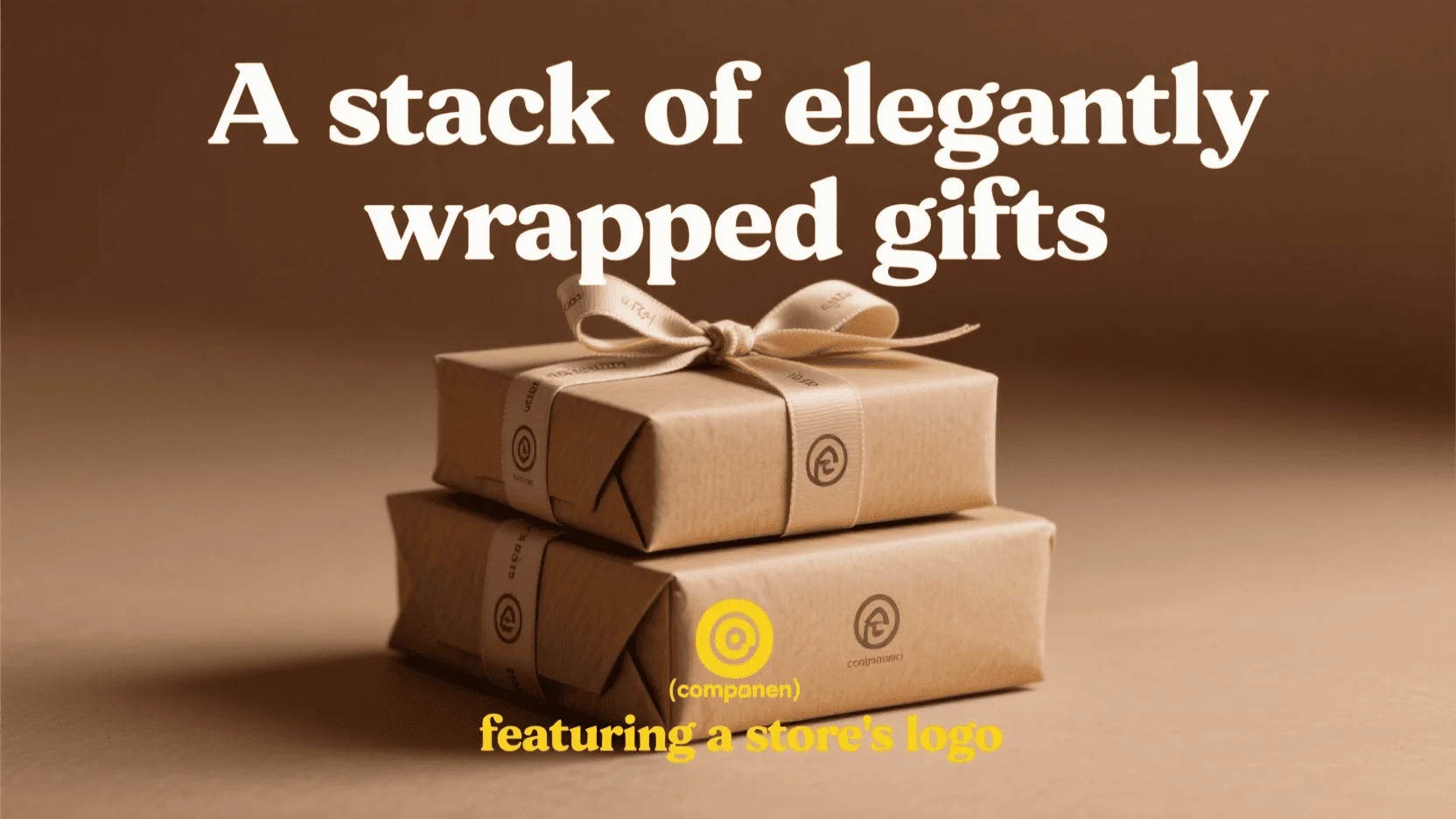
The perception of luxury has changed. Today, consumers, especially Millennials and Gen Z, associate sustainability with quality and premium value. According to a 2023 NielsenIQ report, 78% of US consumers say a sustainable lifestyle is important to them NielsenIQ. A brand that uses kraft paper isn’t seen as cheap; it’s seen as mindful, modern, and confident. Its earthy, organic feel provides a beautiful contrast to the product inside, whether it’s a piece of high-tech electronics or a handmade cosmetic item. This "blank canvas" quality is a designer’s dream. We’ve created stunning holiday packaging for clients using simple black or white ink on kraft paper, which creates a bold, graphic look. For a more festive feel, a touch of red or green can be incredibly effective. By pairing it with other natural elements like twine, a sprig of dried holly, or a custom-printed sticker, you create a multi-layered, tactile experience that feels far more special and personal than any mass-produced shiny paper.
Branding Techniques for Kraft Wrapping Paper
Kraft paper’s versatility allows for a wide range of creative branding opportunities.
- Minimalist Printing1: Use one or two colors of water-based or soy-based ink to print a repeating logo or a custom holiday pattern.
- Contrasting Accessories2: Pair the brown paper with luxurious ribbons, custom-printed paper tags, or wax seals to elevate the look.
- Tonal Designs: Print with a slightly darker shade of brown or a clear varnish to create a subtle, high-end patterned effect.
| Branding Idea | Target Aesthetic | Customer Perception |
|---|---|---|
| Black Logo on Kraft + Twine | Rustic, Modern, Minimalist | Authentic, handcrafted, eco-conscious |
| White Pattern on Kraft + Red Ribbon | Scandinavian, Festive, Clean | Cheerful, thoughtful, stylish |
| Hot Stamp Gold Logo on Kraft | Luxury, Premium, Elegant | Sophisticated, exclusive, high-value |
| No Print, Just Branded Sticker | Simple, DIY, Cost-Effective | Understated, confident, personal |
Conclusion
Christmas kraft wrapping paper has become a favourite for sustainable retail packaging because it perfectly balances environmental responsibility with a powerful brand aesthetic. It is recyclable, compostable, and meets the growing consumer demand for authenticity and eco-conscious choices, proving that sustainable packaging is smart business.
Make a statement this holiday season. Explore our collection of gift wrapping paper or contact our team to design a custom, sustainable packaging solution that your customers will love.
FAQ
Can you print vibrant, colorful designs on kraft wrapping paper?
Yes, but colors will appear more muted and earthy due to the brown paper base. This is often part of its appeal. For brighter colors, white ink can be printed as a base layer first, though this adds to the cost and complexity.
Is kraft paper strong enough to wrap heavy items?
Absolutely. The "kraft" process creates exceptionally strong and tear-resistant paper fibers. The paper’s weight or thickness (measured in GSM) can be selected based on the durability required for your specific products.
Isn’t custom-printed kraft paper more expensive for a retailer?
The initial investment may be slightly higher than for generic, mass-produced wraps, but the cost becomes very competitive when purchased in bulk. Furthermore, the added brand value and alignment with consumer preferences for sustainability can provide a significant return on investment.



